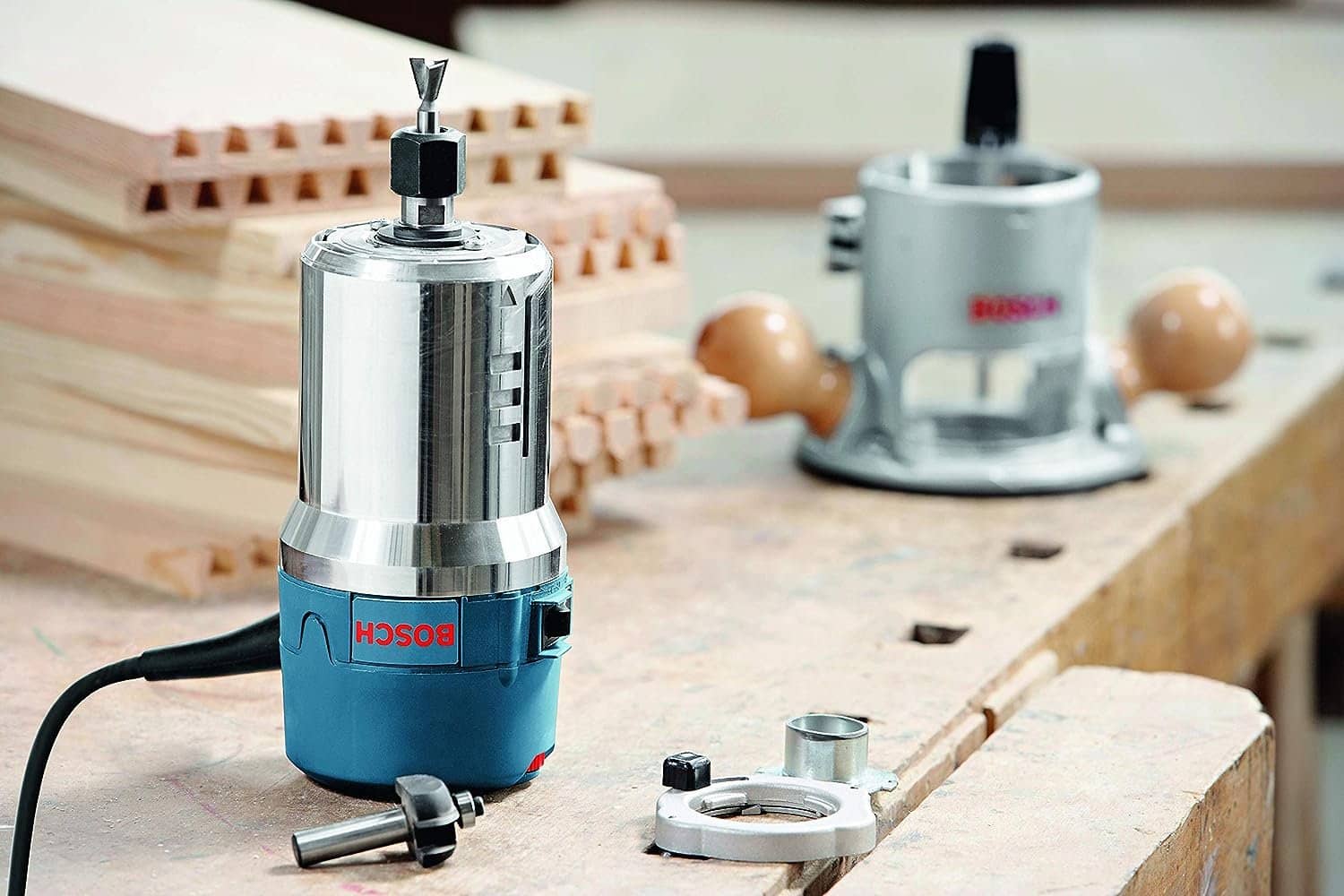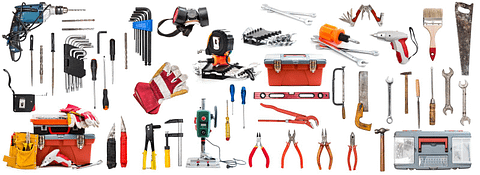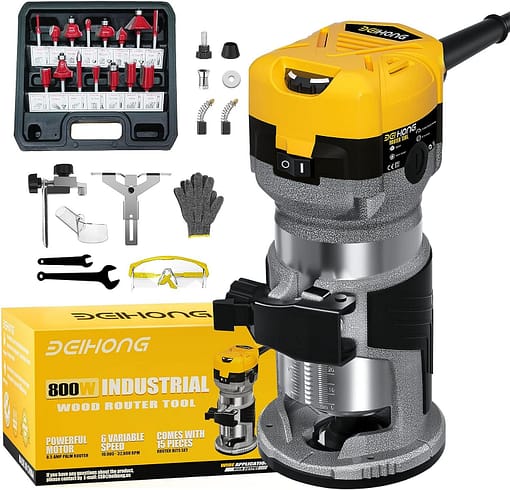Imagine having a versatile tool at your disposal that can shape, carve, and create intricate designs in wood effortlessly. That’s exactly what a woodworking router can do! Whether you’re a professional craftsman or an avid DIY enthusiast, this powerful tool can be used for a myriad of tasks. From making decorative edges and grooves to hollowing out areas for inlays, a woodworking router opens up a world of possibilities for anyone looking to add a touch of artistry to their woodworking projects. Get ready to unlock your creativity and explore the endless applications of this incredible tool.
Woodworking Router Basics
Understanding the woodworking router
When it comes to woodworking, a router is an indispensable tool that can greatly enhance the precision and versatility of your projects. A woodworking router is a power tool that helps create intricate designs, decorative edges, and precise cuts in various materials such as wood, plastic, and metal. It works by spinning a cutting bit at high speeds to remove material, allowing you to shape and finish your workpiece with ease.
Different types of woodworking routers
There are several types of woodworking routers available, each with its own unique features and benefits. The two most common types are plunge routers and fixed-base routers. Plunge routers allow you to adjust the cutting depth while the router is running, making them ideal for creating grooves, dadoes, and inlays. Fixed-base routers, on the other hand, are more stable and better suited for edge profiling and shaping.
Parts and components of a woodworking router
To better understand how a woodworking router works, let’s take a closer look at its key parts and components. The main body of the router houses the motor, which powers the rotation of the cutting bit. The base, whether fixed or plunge, provides stability and control during operation. The collet holds the cutting bit securely in place, while the depth adjustment allows you to set the cutting depth. Additionally, routers may also have a variable speed control, dust collection ports, and handles for comfortable grip and control.
Choosing the right router for your needs
When selecting a woodworking router, it’s important to consider your specific woodworking needs and projects. Think about the type of work you’ll be doing, whether it’s primarily edge profiling, joinery, or intricate carving. Consider the power and speed options of the router, as well as the availability of compatible accessories. It’s also worth considering the ergonomics and overall build quality of the router, as these factors can greatly affect your comfort and the longevity of the tool.
Router Bits
Introduction to router bits
Router bits are the cutting tools that attach to the router and determine the shape and depth of the cut. These small but mighty components come in various types and sizes, each designed to create specific shapes and profiles. Common router bit materials include high-speed steel, carbide-tipped, and solid carbide, with carbide being the most durable and suitable for high-volume use.
Different types of router bits
There is a wide variety of router bits available, each designed for specific woodworking tasks. Straight bits, as the name suggests, create straight cuts and are great for edge profiling and dadoes. Flush trim bits are used to trim the edges of one material to match the edge of another. Rabbeting bits cut a notch along the edge of a workpiece, while chamfer bits create beveled edges. Other popular router bit types include roundover, cove, ogee, and dovetail bits.
Common router bit shapes and profiles
Router bits come in various shapes and profiles, allowing you to achieve different decorative effects and styles. The roundover bit, for example, creates a rounded edge, while the ogee bit produces an elegant S-shaped profile. Beading bits add a decorative bead along the edge of a workpiece, and the cove bit creates a concave profile. Even more intricate profiles can be achieved with specialized bits such as the Roman ogee, classical ogee, and stile and rail bits.
Choosing the right router bit for your project
Selecting the right router bit for your project involves considering the desired outcome and the type of material you’ll be working with. For basic edge profiling and shaping, a simple roundover or chamfer bit may suffice. If you’re creating intricate joinery, consider using a dovetail or box joint bit. Be sure to match the shank size of the bit to the collet size of your router for compatibility. It’s also a good idea to invest in high-quality router bits, as they tend to produce cleaner cuts and last longer.
Router Techniques
Basic routing techniques
Mastering basic routing techniques is essential for any woodworking enthusiast. One of the most common techniques is edge routing, which involves running the router along the edge of the workpiece to create a clean and smooth profile. Another important technique is plunge routing, where the router is plunged into the material to create grooves, mortises, or inlays. Learning how to secure the workpiece and maintain a steady feed rate are key to achieving accurate and professional results.
Edge profiling and shaping
Creating decorative edges and profiles on your workpieces is a fundamental skill in woodworking. With a router, you can achieve a wide range of edge profiles, from simple roundovers to detailed ogee shapes. By using different router bit profiles and adjusting the cutting depth, you can add elegance and visual interest to your furniture, cabinetry, or any other woodworking project.

Joinery techniques
The router is a versatile tool for creating strong and precise joinery. By using specialized router bits and jigs, you can create dovetail, box joint, and mortise and tenon joints with ease. These joinery techniques are essential for constructing drawers, cabinets, and other furniture pieces, providing both structural integrity and aesthetic appeal.
Dadoes and grooves
Dadoes and grooves are commonly used in woodworking to create slots for shelves, dividers, or panels. With a router and a straight bit, you can accurately and efficiently cut these channels to the desired width and depth. By using a guide or fence, you can ensure straight and consistent cuts, resulting in a professional finish.
Rabbets and dados
Similar to dados and grooves, rabbets are another type of recessed cut used for joining materials or creating a stepped edge. With a rabbeting bit and a router, you can easily create these cuts to accommodate the thickness of another workpiece. Rabbets are particularly useful for constructing cabinet backs, drawer bottoms, and picture frames.
Decorative and ornamental techniques
For those looking to elevate their woodworking projects to the next level, the router offers endless possibilities for decorative and ornamental work. By using various router profiles and techniques, you can create intricate designs and patterns, adding visual interest and uniqueness to your workpieces. Whether it’s fluting, beading, inlaying, or carving, the router is a powerful tool for enhancing the aesthetics of your woodworking projects.
Template and pattern routing
Template and pattern routing allow you to replicate intricate shapes and designs with ease. By using a template guide or bushing and a straight or pattern-following bit, you can follow a pre-made template or pattern to create identical cuts in multiple workpieces. This technique is particularly useful for creating perfectly matched parts for furniture components or reproducing complex designs.
Fluting and beading
Fluting and beading are decorative techniques that can transform plain wood into beautifully textured surfaces. Fluting involves cutting parallel grooves, while beading creates small rounded bumps or beads along the surface of the material. With the right router bit and proper technique, you can add depth and dimension to your furniture, moldings, or architectural elements.
Inlaying and engraving
Inlaying and engraving are techniques that allow you to create intricate designs by embedding materials or cutting grooves on the surface of a workpiece. With a plunge router and specialized inlay kits or engraving bits, you can add personalized details, such as initials, patterns, or decorative elements, to your woodworking projects. These techniques are often used in marquetry, jewelry box making, and guitar building.
Router Jigs and Accessories
Overview of router jigs
Router jigs are essential tools that help you achieve precise and consistent cuts with your woodworking router. They provide stability, control, and repeatability, allowing you to create complex joinery, create specific profiles, or execute intricate designs. From simple homemade jigs to advanced commercial jigs, these accessories enhance the versatility and accuracy of your router.
Router table and router lift
A router table is a dedicated woodworking station that houses your router upside down, allowing for easier and more controlled cuts. It provides a large work surface, an adjustable fence, and precise height adjustments, which are essential for routing grooves, dados, and decorative edges. A router lift is a mechanism that allows you to raise or lower the router bit from above the table, eliminating the need to reach under the table for adjustments.
Router fence and guide
A router fence is a guide that helps you maintain a consistent distance between the edge of the workpiece and the cutting bit. It provides stability and accuracy, especially when creating straight edge profiles or routing along the length of the workpiece. Additionally, guide bushings can be used in conjunction with a router fence to follow templates or patterns accurately, ensuring precise cuts.
Router template guides
Router template guides, also known as bushings, are accessories that attach to the base of the router and allow you to follow a template or pattern with the cutting bit. They come in various sizes and shapes, allowing you to achieve different offset distances from the template and create accurate reproductions of complex shapes or designs. Template guides are commonly used in template routing, inlay work, and pattern following.
Router bushings
Router bushings are similar to template guides, but they are designed to be mounted on the router base instead of the router bit. They provide accurate guides for cutting holes or creating recesses of specific diameters. By using different-size bushings and an appropriate straight or pattern bit, you can easily create perfectly sized holes for hardware installation or decorative inlays.
Router collet extensions
Router collet extensions are used when you need to reach a deeper cutting depth than the standard collet allows. They fit between the router collet and the router bit, extending the reach of the bit and enabling you to work on thicker materials or make deeper cuts. Collet extensions are particularly useful for routing mortises, deep grooves, or working with thick stock.
Circle and arc cutting jigs
Circle and arc cutting jigs help you create perfect circles and arcs with your router. These jigs consist of a baseplate and an arm or pivot point that allows the router to pivot around for consistent and accurate cuts. Whether you’re creating circular tabletops, drawer pulls, or ornamental arches, these jigs ensure smooth and precise shapes every time.
Dovetail and box joint jigs
Dovetail and box joint jigs are specialized jigs that simplify the process of creating dovetail and box joints. These joinery techniques are known for their strength and aesthetic appeal, and the jigs assist in achieving precise and consistent results. By using these jigs, you can save time and effort in cutting these complex joints, making them accessible to woodworkers of all skill levels.
Mortising and dowel jigs
Mortising and dowel jigs are tools that aid in the accurate placement and cutting of mortises and dowel holes. Mortises are cavities used for joinery, while dowels are cylindrical pins that strengthen joints or align pieces during assembly. With these jigs, you can achieve repeatable and precise mortises and dowel holes, ensuring strong and well-aligned joints in your woodworking projects.
Raised panel and door making jigs
Raised panel and door making jigs are essential for creating raised panel doors, a popular choice for cabinetry and furniture. These jigs guide the router to create precise cuts on the edges of the door panels, allowing for consistent and uniform profiles. With these jigs, you can achieve professional-looking doors that add depth and elegance to your woodworking projects.
Safety and Maintenance
Router safety guidelines
When using a woodworking router, it’s crucial to prioritize your safety. Always wear appropriate personal protective equipment (PPE), such as safety glasses, hearing protection, and a dust mask. Keep your fingers and clothing away from the router bit, and never reach under a running router. It’s also important to understand and follow the user manual and safety guidelines provided by the manufacturer.
Proper handling and usage of a woodworking router
To ensure safe operation of a woodworking router, it’s important to handle the tool with care and use it in accordance with guidelines. Always hold the router with both hands, maintaining a firm grip and controlling the feed rate. Ensure that the cutting bit is secured properly in the collet and that the collet nut is tightened securely. Avoid using excessive force or pushing the router too hard, as this can lead to unstable operation or kickback.
Preventing kickback and other potential hazards
Kickback is one of the most common and dangerous hazards associated with woodworking routers. To prevent kickback, always use a sharp and appropriate router bit for the task at hand. Keep the cutting edges clean and free of debris, as buildup can affect the performance and stability of the router. Additionally, ensure that the workpiece is securely clamped or supported to prevent movement or binding during routing.
Maintenance and care for your router
To keep your woodworking router in optimal condition, regular maintenance is essential. Keep the router clean and free from dust and debris by using compressed air or a soft brush. Lubricate the router’s moving parts, such as the depth adjustment mechanism and the plunge base, as specified in the user manual. Inspect the power cord and plug regularly for any signs of damage and address any issues promptly. It’s also a good practice to store the router in a clean and dry environment when not in use.
Cleaning and lubricating the router
Keeping the router clean and properly lubricated is crucial for its longevity and optimal performance. After each use, remove any dust or debris from the router’s body, base, and collet area. Use compressed air or a soft brush to clean hard-to-reach areas. Lubricate the depth adjustment mechanism, plunge base, and other moving parts with a light machine oil or silicone lubricant. Take care not to over-lubricate, as excessive lubrication can attract dust and affect the router’s performance.
Replacing worn parts and accessories
Over time, certain parts and accessories of your woodworking router may wear out or become damaged. It’s important to regularly inspect these components and replace them as needed to maintain the tool’s functionality and safety. Check the router bits for any signs of wear or damage, and replace them if necessary. Inspect the power cord, switches, and handles for any damage or fraying, and ensure that all fasteners are tightened securely.
Advanced Router Techniques
Router inlaying and marquetry
Inlaying and marquetry are advanced techniques that involve creating intricate designs by embedding different materials, such as wood veneers, metals, or shell, into a workpiece. With the precision and control of a woodworking router, you can achieve seamless and precise inlays, adding depth and visual interest to your projects. Whether it’s a small decorative accent or an elaborate pattern, these techniques require careful planning, precise routing, and patience.
Creating dovetails and box joints
Dovetail and box joints are advanced joinery techniques that provide both strength and aesthetic appeal to woodworking projects. With a router and a dovetail or box joint jig, you can create precise and interlocking joints that require no additional fasteners. These joints are commonly used in furniture construction, drawer making, and cabinetry, and mastering their creation requires practice and attention to detail.
Advanced joinery techniques
In addition to dovetails and box joints, there are various other advanced joinery techniques that can be executed with a router. These include mortise and tenon joints, finger joints, bridle joints, and many more. By combining specialized router bits, templates, and jigs, you can achieve intricate and reliable joints, elevating the quality and durability of your woodworking projects.
Complex molding and trim work
The router is a versatile tool for creating complex moldings and trim work, allowing you to add decorative details and profiles to your furniture and cabinetry. By using various router bits and jigs, you can replicate traditional profiles and styles or design your own custom moldings. Whether it’s crown molding, baseboards, or chair rails, the precision and control of the router make it an ideal tool for achieving clean and elegant trim work.
Intricate carving and shaping
With the right router bits and techniques, you can turn your woodworking router into a carving and shaping tool. By moving the router along the surface of the workpiece, you can sculpt intricate designs, smooth contours, and add texture to your projects. Whether it’s relief carving, shaping decorative moldings, or creating sculptural elements, the router provides precise control and allows for endless creativity.
Scrollwork and ornate designs
Scrollwork and ornate designs are often associated with intricate and delicate woodworking craftsmanship. By using a router with specialized bits and techniques, you can achieve the same level of detail and elegance in your projects. Whether it’s creating delicate fretwork, intricate patterns, or ornate trims, the versatility of the router allows you to bring your designs to life with precision and ease.
Cabinet and furniture making techniques
The router is an essential tool in cabinet and furniture making, as it can streamline production and enhance the overall quality of your pieces. With the ability to create precise joinery, decorative profiles, and intricate details, the router is invaluable in constructing cabinets, tables, chairs, and other furniture. From routing mortises for hardware installation to shaping table legs and creating raised panel doors, the router is a must-have for professional-grade cabinet and furniture making.
Using a Router for Different Materials
Woodworking projects with a router
While woodworking is often associated with working with wood, the router can also be used effectively with other materials. When it comes to wood, the router excels in shaping and profiling solid wood, creating joinery, and adding decorative details. However, it can also be used for routing plastic and acrylic, routing aluminum and other metals, routing laminates and veneers, routing foam and insulation materials, as well as routing composites and fiberboard.
Routing plastic and acrylic
The router can be used to shape and trim plastic materials such as acrylic, polycarbonate, or PVC. With the appropriate router bits and cutting techniques, you can achieve precise cuts, smooth edges, and intricate profiles in plastic materials. This makes the router a valuable tool for fabricating signs, displays, or other plastic components.
Routing aluminum and other metals
While the router is primarily used for woodworking, it can also be used to cut and shape aluminum, brass, and other soft metals. However, routing metal requires special considerations, as the cutting forces and heat generated can be higher compared to routing wood. Using carbide-tipped bits designed for metal, reducing the cutting speed, and providing adequate cooling and lubrication are essential for successful metal routing.
Routing laminates and veneers
Laminates and veneers are popular choices for adding visual appeal and durability to woodworking projects. The router can be used to trim and shape laminates and veneers, achieving clean and flush edges. By using a laminate trimming bit with a top-bearing guide, you can follow a template or the edge of the workpiece to achieve precise and professional-looking results. This technique is commonly used in cabinet making, furniture construction, and countertop installation.
Routing foam and insulation materials
The router can be a useful tool for working with foam and insulation materials, whether it’s for creating custom packaging, carving foam inserts, or fabricating insulation panels. By using a suitable bit for foam cutting, you can achieve clean and precise cuts, shapes, and contours. It’s important to select a bit with the appropriate flute geometry and tooth configuration to minimize tearing or melting of the foam material.
Routing composites and fiberboard
Composites, such as fiberglass or carbon fiber, as well as fiber-reinforced materials, present unique challenges when it comes to routing. These materials tend to be abrasive and can quickly wear out cutting tools. However, with the right combination of router bit materials and techniques, you can achieve accurate cuts and profiles in composite and fiberboard materials. It’s important to select router bits specifically designed for these materials and to use proper dust collection and personal protective equipment when routing composites.
Common Router Problems and Solutions
Router bit slipping or chattering
Router bit slipping or chattering can occur if the router bit is not securely tightened in the collet or if the cutting edges are dull. To prevent this problem, always ensure that the router bit is properly inserted into the collet and that the collet nut is tightened securely. Using a collet extension for greater bit stability can also help reduce slipping. Additionally, regularly inspect and replace dull or damaged router bits to maintain optimal cutting performance.
Burn marks on the material
Burn marks can occur when the router bit rotates too slowly or when the feed rate is too slow, causing excessive friction and heat. To prevent burn marks, select an appropriate router bit with the correct cutting speed for the material being routed. Increase the router speed if necessary and maintain a steady feed rate to ensure smooth and clean cuts. It’s also helpful to have sharp and properly maintained cutting bits, as dull bits can generate more heat.
Tearout and splintering
Tearout and splintering are common issues when routing across or against the grain of the wood. To minimize tearout, it’s important to use a sharp and appropriately sized router bit for the task. When routing across the wood grain, make shallow passes and avoid excessive feed pressure. When routing against the grain, consider using a climb-cutting technique or a router table with a backing board for added support. Applying masking tape along the cut line can also help reduce tearout.
Uneven or inconsistent cuts
Uneven or inconsistent cuts can occur due to various factors, including an improperly adjusted router, an unstable workpiece, or a worn-out router bit. To achieve even and consistent cuts, ensure that the router is properly calibrated and that the depth adjustment mechanism is accurate. Use clamps or other securing methods to stabilize the workpiece during routing. Regularly inspect and replace worn-out router bits to prevent uneven cutting results.
Router motor or baseplate issues
Router motor or baseplate issues can occur over time due to wear or damage. If you experience motor or baseplate problems, such as excessive vibration, noise, or difficulty adjusting the depth, it’s important to address these issues promptly. Consult the manufacturer’s user manual for troubleshooting tips or contact their customer support for professional assistance. In some cases, it may be necessary to replace worn parts or even the entire router.
Dull or damaged router bits
Dull or damaged router bits can greatly affect the quality of your cuts and the performance of your router. It’s essential to regularly inspect your router bits for signs of wear, such as dull cutting edges or burn marks, and replace them as needed. To extend the lifespan of your router bits, avoid using excessive feed pressure, maintain a proper cutting speed, and provide adequate cooling and lubrication during routing.
Router not starting or running properly
If your router fails to start or run properly, there may be several reasons behind the issue. Check the power cord and outlet to ensure a secure connection and proper power supply. Inspect the router’s switches, brushes, and other electrical components for any damage or wear. Ensure that the collet is clear of debris and that the router bit is properly inserted. If the problem persists, consult the user manual or contact the manufacturer for guidance.
Excessive noise or vibration
Excessive noise or vibration during router operation can indicate a problem with the router’s motor, bearings, or other internal components. To address this issue, ensure that the router is sitting securely on a stable surface and that all fasteners are properly tightened. Inspect the router’s baseplate, motor housing, and handles for any signs of wear or damage. If the problem persists, consult the manufacturer’s troubleshooting guide or seek professional assistance.
Router collet or chuck problems
The router collet or chuck is responsible for holding the router bit securely in place. If you experience issues with the collet or chuck, such as improper gripping or difficulty in releasing the bit, it’s important to address these problems promptly. Inspect the collet and chuck for any debris or damage, and clean or replace them as necessary. Properly lubricate the collet or chuck with a light machine oil or silicone lubricant to ensure smooth operation.
Router fence or guide issues
The router fence or guide plays a crucial role in providing stability and accuracy during routing. If you encounter issues with the fence or guide, such as misalignment or instability, it can greatly affect the quality of your cuts. Inspect the fence or guide for any signs of wear, looseness, or damage, and address these issues promptly. Adjust or replace the fence or guide as necessary to ensure proper alignment and stability during routing.
Tips and Techniques for Better Results
Proper router setup and adjustment
Achieving optimal results with a woodworking router starts with proper setup and adjustment. Ensure that the router is properly mounted and secure, whether on a router table or handheld. Calibrate the depth adjustment mechanism accurately, paying attention to the cutting depth and ensuring it is consistent throughout the project. Use the appropriate router bit for the task at hand and ensure that it is properly inserted and secured in the collet.
Test cuts and trial runs
Before working on your final project, it’s always a good practice to perform test cuts and trial runs. This allows you to fine-tune your setup, adjust your feed rate, and verify the suitability of the chosen router bit. Conducting test cuts on scrap or similar material helps you identify potential issues, such as tearout or uneven cuts, and make any necessary adjustments before committing to the actual project. It’s also an effective way to gain confidence and familiarity with the router’s behavior.
Securing the material for stability
Securing the workpiece is essential for achieving stability and accuracy during routing. Whether using clamps, vises, or a router table with a fence, make sure the material is firmly held in place to prevent movement or vibration that could affect the quality of the cut. For handheld routing, consider using a non-slip mat or adding friction-enhancing materials to the work surface to prevent slippage.
Using the correct feed direction
Proper feed direction is crucial for achieving clean and accurate cuts with a woodworking router. When using handheld routing, it’s generally recommended to move the router against the rotation of the bit, also known as conventional routing. However, in certain instances, such as with specific grains or tearout-prone materials, using a climb-cutting technique, where the router is moved in the same direction as the rotation of the bit, can yield better results. Experimenting on scrap material is advised to determine the best feed direction for your specific project.
Managing router speed and depth
The cutting speed and depth of the router greatly impact the quality and efficiency of the routing process. Different materials and router bits require specific speed and depth settings for optimal results. It’s important to refer to the manufacturer’s guidelines for appropriate cutting speeds, adjust the router speed accordingly, and make incremental changes to the cutting depth as needed. Taking shallow passes and increasing the cutting depth gradually can help prevent tearout and produce cleaner cuts.
Avoiding router tearout and chip-out
Tearout and chip-out are common issues when working with a router. To minimize these problems, consider using a sharp, high-quality router bit specifically designed to prevent tearout. Taking shallow passes and moving slowly when routing across or against the grain can also help prevent tearout. Using a backer board or sacrificial piece of wood behind the workpiece can provide support and reduce chip-out on exit cuts.
Creating clean and crisp edges
To achieve clean and crisp edges, it’s essential to use the appropriate router bit and to pay attention to the quality of the cut. A sharp, high-quality bit with the correct profile and cutting speed is crucial for clean edges. Maintaining a steady feed rate and applying even pressure along the cut can also help achieve cleaner results. Avoid stop-and-start movements, as they can cause burn marks or result in uneven edges.
Achieving smooth and accurate profiles
Creating smooth and accurate profiles relies on proper technique, tool selection, and feed control. Using the correct router bit and ensuring that it is sharp and properly maintained is essential for achieving smooth profiles. Pay attention to the direction of the grain and adjust your feed rate accordingly to minimize tearout. Keep a steady hand and move the router smoothly along the workpiece to achieve a consistent profile.
Avoiding common mistakes and pitfalls
When working with a woodworking router, it’s common to encounter certain challenges or make mistakes along the way. Some common pitfalls include using the wrong router bit for the task, applying too much or too little pressure, moving too quickly or too slowly, or neglecting to secure the workpiece properly. By being aware of these potential mistakes and taking the time to plan, practice, and troubleshoot, you can overcome these challenges and achieve better results in your woodworking projects.
Resources and Further Reading
Books and manuals on woodworking routers
To further enhance your knowledge and skills in woodworking routers, consider exploring various books and manuals dedicated to this topic. These resources often provide comprehensive information on router types and features, techniques, safety guidelines, and project ideas. Some recommended titles include “The Router Book” by Pat Warner, “Router Magic” by Bill Hylton, and “Woodworking with the Router” by Bill Hylton.
Online tutorials and video courses
Online tutorials and video courses offer another great way to learn more about woodworking routers and their applications. Websites such as YouTube, Woodworking Network, or FineWoodworking.com provide a wide range of instructional videos, tips, and project ideas. Additionally, platforms like Udemy or Skillshare offer paid online courses taught by experienced woodworkers, providing in-depth guidance and hands-on demonstrations.
Woodworking forums and communities
Engaging with woodworking forums and communities can be a valuable source of knowledge and inspiration. Platforms such as Reddit’s r/woodworking, Woodnet.net, or SawmillCreek.org allow you to connect with fellow woodworkers, ask questions, share experiences, and learn from their expertise. These communities often provide a wealth of information, advice, and project inspiration for all skill levels.
Professional router woodworking websites
Professional woodworking websites, such as Woodworkers Guild of America, Router Workshop, or Woodsmith, offer a wealth of resources for router enthusiasts. These websites feature articles, project plans, tool reviews, and instructional videos specific to woodworking routers. By browsing through these websites, you can access valuable information and step-by-step guides to improve your router woodworking skills.
Router bit manufacturers and suppliers
To explore the vast array of router bit options available, it’s important to familiarize yourself with reputable router bit manufacturers and suppliers. Companies such as Freud, Whiteside, Amana Tool, and Bosch offer a wide range of high-quality router bits, each designed for specific applications and materials. Visiting their websites or contacting local woodworking stores can help you find the right router bits for your projects.
Woodworking tool and equipment suppliers
Lastly, having access to reliable woodworking tool and equipment suppliers is essential for acquiring high-quality routers, router bits, jigs, and accessories. Recognized suppliers, such as Rockler, Woodcraft, or Lee Valley, offer a wide range of woodworking tools and equipment, including routers and their accompanying accessories. Their knowledgeable staff can provide expert advice and recommendations, ensuring you have the necessary tools and resources for your woodworking journey.










